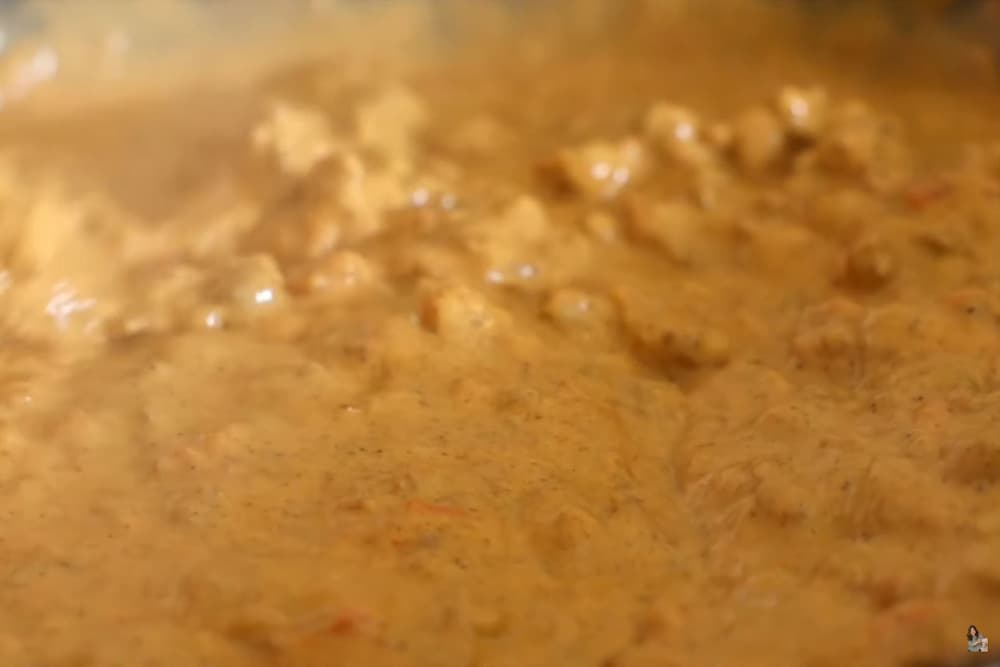How to Store Queso Dip and Long Does Queso Last?
Creamy, cheesy, and thick – queso is the ultimate dip for any occasion. Whether you’re hosting a nacho night or just craving a comforting snack, queso is the perfect indulgence. However, with its limited shelf life, storing leftover queso can be a challenge.
But fear not, I’m here to share some tips on how to store queso properly and keep it fresh for longer.
While queso is typically made from unrefrigerated ingredients, it can harden quickly, especially if it’s homemade. Additionally, the risk of contamination from double dipping can make storing leftover queso seem daunting. But with the right storage techniques, you can enjoy your queso for days to come.
In this guide, I’ll provide you with all the information you need to properly store your queso. From the ideal temperature to the best containers to use, you’ll learn everything you need to know to keep this type of cheese dip fresh and delicious.
So, let’s dive in!
Contents
- How to Store Queso Dip and Keep It Fresh?
- Does Queso Go Bad?
- How to Tell If Queso Dip Is Bad?
- Can You Eat Queso the Next Day?
- Can You Eat Queso That Sat Out All Night?
- How Long Does Queso Last?
- How Long Does Queso Last in the Fridge?
- How Long Does Queso Last at Room Temperature?
- Frequently Asked Questions
- Conclusion
How to Store Queso Dip and Keep It Fresh?
Whether you’re enjoying Mexican cheese dip for nacho night or plain cheese, knowing how to properly store it can help you enjoy it for days to come. And if you’re dealing with homemade queso, it’s important to be extra careful to avoid bacterial contamination.
There are three main ways to store queso, depending on how long you want to keep it: keeping it in a cooler, refrigerating it, or freezing it.
Related reading: How To Store Kimbap?
Keeping Queso in a Cooler
If you’re planning to enjoy your queso within a few hours, keeping it in a cooler is a great option to make it last longer. Simply place the queso in an airtight container or a resealable bag and put it in a cooler with some ice packs. This will keep the queso at a safe temperature, preventing bacterial growth and ensuring that it stays fresh.
Refrigerating Queso
For longer storage, putting your queso in the fridge is the way to go. First, let the queso cool down to room temperature, then transfer it to an airtight container. Make sure the container is not too big for the amount of queso you have, as this will expose it to more air and lead to faster spoilage. Place the container in the fridge, and make sure to consume the queso within 3-5 days.
Freezing Queso
If you want to store your queso cheese sauce for longer than a week, freezing it is your best bet.
Freezing slows down the growth of bacteria, preserving the freshness and flavor of your queso for up to three months. However, freezing can change the texture of the queso, so it’s important to follow these steps carefully:
- Let the queso cool down to room temperature.
- Transfer the queso to a freezer-safe container or resealable bag, leaving some space at the top for expansion.
- Label the container or bag with the date and type of queso.
- Place the container or bag in the freezer.
- When you’re ready to enjoy your queso, let it thaw in the fridge overnight, then reheat queso slowly on the stove or in the microwave.
With these storage techniques, you can enjoy your queso for longer and avoid the disappointment of having to throw away leftover queso.

Does Queso Go Bad?
Yes, queso can go bad if not stored properly.
If queso is kept at room temperature, bacteria will start to grow within 2 hours, which can cause it to spoil and develop a bad odor.
Even if you place it in the refrigerator, bacterial growth will continue at a slower rate, and it will eventually spoil after a few days.
Properly storing queso in an airtight container, in a cooler or refrigerator, or freezing it can help prevent spoilage and extend its shelf life.
It’s important to follow safe food handling practices and consume queso before its expiration date or within a few days of preparation.
How to Tell If Queso Dip Is Bad?
Queso dip will go bad over time. It’s important to know how to spot the signs that your cheese dip has gone bad to avoid consuming potentially harmful food.
Here are some things to look out for in bad queso:
Mold
If you notice any white or green spots on the surface of the queso dip, it’s best to discard it. Mold can also grow on the container or plastic wrap, so be sure to check those areas carefully as well.
Taste
If the queso tastes sour, off, or has an unpleasant odor, it’s likely gone bad and should not be consumed.
Color
Fresh cheese dip has a rich color, and any fading or discoloration may be a sign of spoilage. If the dip appears significantly paler than it should be, it’s best to discard it.
Texture
If the texture of the queso dip appears slimy, separated, or lumpy, it may have spoiled and should not be consumed.
By paying attention to these signs, you can ensure that you’re consuming fresh and safe queso dip. It’s always better to err on the side of caution and discard any queso dip that shows signs of spoilage to prevent foodborne illness.

Can You Eat Queso the Next Day?
Absolutely, storing queso properly is crucial if you want to enjoy it later. The last thing you want is to get sick from spoiled queso. To ensure that your queso is safe to eat the next day, you need to refrigerate it promptly after use. If you’re making queso from scratch, make sure to heat it to a temperature of at least 165°F (74°C) before serving.
To store queso for the next day, transfer it to an airtight container and put it in the refrigerator. You can store queso in the refrigerator for up to 4 days. However, keep in mind that the longer you store it, the higher the risk of it going bad. When you’re ready to eat it, reheat the queso to a temperature of at least 165°F (74°C) before serving.
Remember to check the queso for any signs of spoilage, such as mold, a sour taste, or a slimy texture, before consuming it. If the queso looks or smells off, it’s best to throw it away to avoid getting sick.
Can You Eat Queso That Sat Out All Night?
No, you can not eat the queso that has been left on your table all night.
It’s important to note that bacteria can multiply quickly in queso that has been left out all night, and some bacteria can produce toxins that are harmful to humans. Therefore, it’s best to discard any queso that has been left out at room temperature for more than two hours to avoid the risk of foodborne illness.
It’s always better to be safe than sorry when it comes to food safety.
How Long Does Queso Last?
The longevity of queso depends on the storage method and the type of queso. If left at room temperature, queso can last only 2-3 hours before going rancid. However, if stored in a cooler, it can last up to a day. Refrigeration can keep queso fresh for 4-6 days, while freezing can extend its life to approximately six months.
For homemade queso, the duration of freshness can range from one day to six months, depending on the storage method.
Store-bought queso tends to last longer, particularly if unopened. An unopened jar of queso can last up until the “best before date” on the container. How long will queso last after opening depends on whether it’s refrigerated or frozen – the queso can last anywhere from 2 hours (on the table) to 6 months (in the freezer).
How Long Does Queso Last in the Fridge?
The duration that queso lasts when stored in the fridge will depend on whether it’s homemade or store-bought.
For homemade queso, you can expect it to last between 4-6 days in the fridge.
On the other hand, store-bought queso can last up to 2 weeks once opened. If the queso container is unopened, it can last as long as the shelf life of queso listed on the container.
How Long Does Queso Last at Room Temperature?
It is important to note that the fresh cheese sauce should never be left at room temperature for more than 2 hours. This applies to both homemade and store-bought queso that has been opened.
After 2 hours, bacteria begin to grow rapidly in the queso, which can cause foodborne illnesses.
To ensure the safety of your queso cheese dip, it is recommended that you refrigerate it or keep it at a temperature below 40°F.
If you need to keep your queso at room temperature for an extended period, you should consider using a warming tray to keep it at a safe temperature.
Unopened jars of queso, on the other hand, can last longer at room temperature, up to the printed expiration date on the jar.
Frequently Asked Questions
What is The Difference Between Queso Fresco and Queso Blanco?
Queso fresco and queso blanco are two types of Latin American cheese that are often used interchangeably, but there is a slight difference between them. Queso fresco cheese is made with rennet and cultures to form the curds, while queso blanco is made from milk that has been curdled with an acid like lemon juice or vinegar. Queso blanco is simpler to make than queso fresco, as it requires only milk and an acidifying agent. Traditionally, queso blanco is made from cow’s milk, while queso fresco may be made from a mixture of cow’s milk and goat’s milk. The important difference is that queso blanco does not melt and can not be used to make queso dip.
How Long Can You Keep Queso Out?
Depending on the temperature, you can leave queso out for 2-3 hours. But if it is a warm day, the queso will start going bad faster.
So it is not recommended to leave queso out at room temperature for more than two hours, regardless of the weather.
Can You Freeze Queso?
Of course, yes, you can freeze queso! Freezing queso is a good way of storing it for a long time.
Check the how to store queso section to know how you can freeze it properly.
How to store queso from a Mexican restaurant?
If you want to store the queso from a Mexican restaurant, it is essential to transfer it to an airtight container and refrigerate it as soon as possible. This will keep the restaurant queso fresh for a few days, but it’s best to consume it within 2-3 days to avoid any health issues. Make sure to reheat the queso to a safe temperature before consuming it again.
Related reading: How to Store Beignets?
Conclusion
In this article, I have discussed how to store queso dip properly to keep it fresh for as long as possible.
I covered topics such as how long queso can last when stored in the refrigerator or at room temperature, how to properly freeze queso, and the risks of eating queso that has gone bad.
By following these guidelines, you can ensure that your queso dip stays safe and tasty to eat. So, if you’re wondering how to store queso dip, follow my tips for optimal results.

